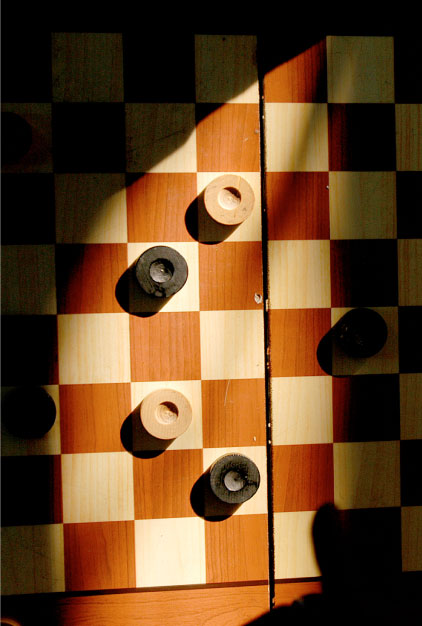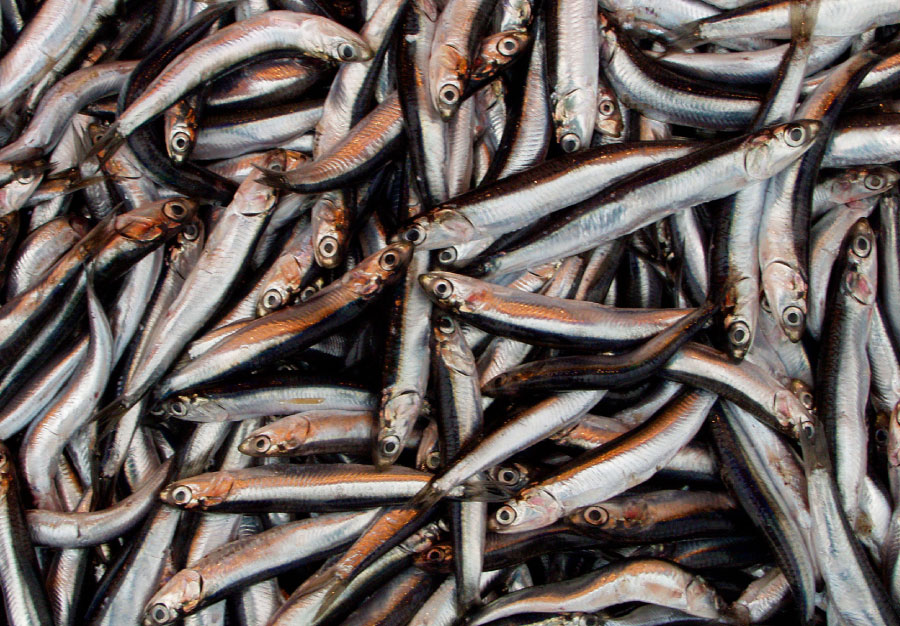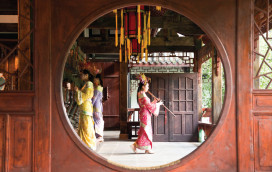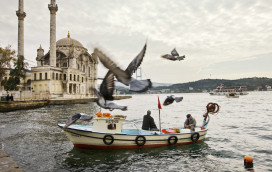The first time I crossed the border into Turkey, I was on foot, on a long walk from Gdansk in Poland. My final destination was the glorious city of Istanbul, but on reaching Erdine I found it hard to leave. Right on the border with Greece and Bulgaria, the ancient city founded by the emperor Hadrian was for a while held by Greek troops thanks to some sharp military maneuvering before the outbreak of World War I, and known as Adrianople. The Turks won it back, but it was destined thereafter to be an outlier, a city on the road to nowhere; and that, to be honest, is why I love it so. For me it is the soul of Turkey – and a perfect preparation for Istanbul itself.
After our journey by foot through the grey, drab cities of post-Communist Eastern Europe, Erdine was also a gateway to the marvels of Turkish enterprise: food stalls and coffee kiosks, restaurants and bazaars, and spicy food and minty tea; a cornucopia of possibilities. On our first day, we found a room in an old hotel, with doorknobs polished by a century of use, and woke to the sound of a cockerel crowing like a muezzin. For breakfast we ate yogurt and honeycomb, and went out to explore the second capital of the Ottoman Empire.
There aren’t many tourists in Edirne. As we wandered through its charming Ottoman district, with its collections of 19th-century wooden houses, if we half-closed our eyes we could be back in the world of pashas and viziers, and splendidly accoutred armies on the move to conquer Europe.
The next day, entering the courtyard of the great Selimiye Mosque, we stood before what is, perhaps, the most perfect and ambitious mosque ever raised in Turkey. It is the masterpiece of that 16th-century architect of genius, Sinan, rival not only to the glorious mosques of Istanbul but to the mother of them all, the great church-cum-mosque of Aya Sofya – of which more later. Aside from a few weekday worshippers, I had the place to myself, a moment to reflect on my smallness in the grand arch of the cosmos. A few moments later, I was in the 16th-century hammam, or baths, also built by Sinan, enjoying a leisurely steam soak.
Partly European, partly Islamic, Edirne is comfortably modern yet steeped in the traditions of the past, and above all slow, expansive and relaxed. Life doesn’t bustle in Edirne. Old men play backgammon in the square, and drink their tea. Once, it’s true, the Ottoman armies would gather here to begin their campaigns into Serbia and Greece, even to the walls of Vienna, 1,000 miles away. But with the departure of the armies, the place would revert to its usual unruffled calm, and sultans would descend to hunt in the royal parks, away from the pressures of populous Istanbul.
It’s worth paying a visit here to the Ottoman medical museum, close to the railway station, which recalls the sensitivity of early Islamic medicine, with its particular care for the sick in mind. While Europeans locked their madmen in bedlams, to be jeered and stared at, the Ottoman doctors used gentle and effective treatments – aromatherapy, music and the sounds of water – that could alleviate, if not cure, a patient’s condition.
Some of the city’s cobbled streets, not to mention the odd café, have an almost Central European air. Edirne was linked to Central Europe by trade and war, and many of the languages of Southeastern Europe were once spoken there: Greek and Bulgarian, Serbian and German, and all the mountain dialects of the Pindus and Rhodopes mountain ranges. Edirne is a little lost vision of what once was, and I like it for that. It’s also a taste of things to come.
For what comes next – a few hours away by bus or car – is Istanbul, a city of such grandeur and complexity, a city so freighted with meaning and possibility, rich, bewildering and exciting, that it cannot be comprehended all at once.
Our journey to get there was unremarkable: two days’ walk across the hot Thracian plains, trying to find byways that avoided the main road, and its hum of dusty trucks. Our reward was the sea at Tekirdag, our first sight of the sea for many months, and thousands of miles. We lay on the sand, in the shadow of a minaret, hearing the muezzin’s call to prayer echo across the water and watching a sky crowded with migrating storks. Men in tea shops waved and invited us to join them, but we only smiled. A few more miles, a few more hours, and we would reach the city of our dreams.
“You walked? From Poland?” The reception clerk shook his head. “You must have been carrying a Kalashnikov.” I’m glad he said so: it made me feel rather brave. It was nonsense, of course: all the way from Poland we had been fed and hosted by kindly souls in villages and farms, and when I once brandished a stick it was only to repel a Carpathian sheepdog. But his remark was of a piece with something we had already learnt. “You’re in good hands here,” people always said, as they invited us across their threshold. “But don’t go on. Stop here.” Over the ridge, beyond the river, or in the next town, they said, “They’ll rob you, cheat you, or eat you alive.” And in the next place, of course, they’d say the same.
Along the shore of the Sea of Marmara, where the great ships wait like patient cattle in the roadstead, we had walked, still dreaming, through the stripy walls of the old city of Istanbul – double walls, triple walls, of rubble and stone and bands of brick, punctuated by towers, most fearsome on the landward side. No one, the Byzantines believed, could take the city from the sea. In the shadow of the massive stones, we passed small market gardens that once fed the mightiest city in medieval Europe, with a population of well over a million.
Constantinople, as the rechristened city of Byzantium became known, was founded by Constantine the Great in 330AD to be the second Rome, and much has been made of the fact that it encompassed seven hills, as did Rome. We failed utterly to identify them: Istanbul is simply a hilly city, full of steep streets and even stepped streets, though none rival the splendid Camondo Stairs completed in Art Nouveau glory in the late 19th century.
As we tramped into the city, our belongings on our backs, we passed some of the hamals, or porters, who carry vast loads on their backs secured by a band around their foreheads. Bent almost double, they put our chafing shoulders to shame. But the hills kept us cool, encouraging a breeze, and giving glimpses, from the top of an alley, or a window over the street, of the extraordinary Bosphorus, twinkling and choppy in the summer sun.
Still to this day one of the busiest waterways in the world, the Bosphorus meanders through the very heart of Istanbul, and it puts the city on one of the most astonishing crossroads in the world. Too many cities are known as the place where East meets West; in Istanbul, as we soon discovered, it’s no idle boast. We stood at the very edge of Europe, looking east across the straits to Asia, and the Turkish heartland. Perhaps, as one overawed ambassador put it in the 16th century, it is a city devised to be the capital of the whole world.
His 16th-century world was smaller, of course. But Istanbul felt immediately like the turnstile of a world, whose size we could measure through a few hours at lunch beneath the Galata Bridge, dining on fish plucked from the waters at our feet: the exquisite lüfer, or bluefish, simply grilled. From there we watched the ships that glide along the Bosphorus West to East, and East to West.
The Bosphorus is not a river but a flooded chasm, created thousands of years ago when the Black Sea burst into the Mediterranean, almost a mile wide and several hundred feet deep. Jason and the Argonauts passed by here, and Xenephon’s shattered army of ancient Greeks, and even now it is where the people and the products of Southern Europe meet the Eastern world of the steppe and the far shores of the Black Sea. Oil tankers, Russian warships, battered freighters from China, cruise ships from Naples and Southampton, all file through the straits, dwarfed by the hills of Istanbul, and sliding easily beneath the great suspension bridges that have been flung across from the European to the Asian shore.
Wherever I walked in the city, I found myself knee-deep in history; the past guiding my steps, and its relics scraping my shins. Wandering towards the Grand Bazaar up Divan Yolu – the old Imperial Road from Constantinople to Rome – I trod in the footsteps of Byzantine emperors. Dropping down from Topkapi to Eminonu, I ambled along the road that wound past the Sublime Porte, the seat of Ottoman government, where the Grand Vizier governed, in a sultan’s name, an empire that stretched from the borders of Iraq to the river Nile, and from the Crimea to the Danube. On my way to the Aya Sofya I stopped at the Milion, now just an obscure stump of stone, from where, more than a thousand years ago, all distances within the Roman Empire were measured.
Before actually going into the fabled church-cum-mosque, we descended, via a dark stairway, into the astonishing Yerebatan cistern. This subterranean forest of beautiful marble columns, rising from a shallow underground lake, was built by the emperor Justinian, as was the Aya Sofya just beyond. This was constructed to be the temple to beat all temples and it is said that when, in 535AD, the emperor first entered the building, he murmured, “Solomon, I have outdone thee!”
Aya Sofya’s architects were the first in history to figure out a way of placing a vast dome, with a circular rim, on a building that was essentially square. Square on the earth, for the world below, and domed above, for the divine world. “We knew not whether we were on Earth or in heaven,” a group of 9th-century Russians declared when their Byzantine hosts ushered them into the building – and adopted Christianity on the spot.
It was, it is true, also a piece of imperial bling: I couldn’t help smiling when I saw, at the top of every column, the initials of Justinian and his saucy wife, Theodora, entwined in marble: I and T. And upstairs, in one of the galleries, I was startled to find a marble inscription on the floor that read, simply, Enrico Dandolo: the tomb of the blind nonagenarian Doge of Venice who, in 1204, masterminded the first successful assault on the walls of Constantinople in almost a thousand years. For the great empire of Byzantium, which ruled from this city, it was the beginning of the end.
The city that lies before our eyes is now primarily Ottoman. When their great armies stormed the city for a second time in 1453, raised the crescent of Islam over the dome of Aya Sofya and made the city the capital of their new empire, they set about restoring its glory. Successive sultans indulged in a frenzy of building, paid for by the trade and peace they brought to Istanbul. Great new mosques decorated the skyline. At their feet, the famous Grand Bazaar dropped down the hillside to the Golden Horn, a huge creek.
I always enjoy visiting the bazaar, the original shopping mall, a glorious warren of tunnels and arcades offering everything from old books to jewels, where you can always find a pleasant café and sit for a moment drinking in the atmosphere. The Grand Bazaar has two mosques, more than 5,000 shops and innumerable secrets, and perhaps no one in Istanbul really knows them all.
The streets around are worth exploring, too, not least for the amazing old caravanserais, where caravans of camels from the Asian side or of mule-trains from Europe would be stabled, and their goods unloaded and stored, while the merchants haggled and ate and slept upstairs.
Nor should the sultan’s palace be missed. Unlike Versailles or Buckingham Palace, Topkapi is not a monolithic building with a façade designed to make you feel small, but more like a luxurious encampment, a sequence of pavilions and tents raised in marble and stone, spilling down the hill of Seraglio Point to the Bosphorus below. It is formed of three increasingly intimate, and secure, courts: the first public, and the last for the enjoyment of the sultan and his family alone. To one side are the harem apartments, built and rebuilt over the centuries to house the sultan’s many concubines and women attendants. Walking through, it charms and outrages in likely equal measure.
Looking out from the palace are views of a conical tower across the waterway known as the Golden Horn. Not as majestic as the Bosphorus, into which it flows, the Golden Horn is a substantial creek, and it divides old Istanbul from the district known nowadays as Beyoglu, which leads on to other, more modern districts of the city. Once known as Galata, it was originally a small walled city of its own, run by Italian merchants; over the centuries it has kept its European character, and today it is where the consulates and the restaurants, the bars and many of the hotels of Istanbul are found. The area around Topkapi, Aya Sofya and the Blue Mosque is good for sightseeing, but Beyoglu is where modern Istanbul hangs out.
Indeed, below the heights of Galata, below the famous Genoese tower (worth a lift to the top, for the stunning views), is Istanbul Modern, a former brutalist warehouse converted into a smart contemporary art gallery. One moment, then, you are in an arcade of the Grand Bazaar, in a café out of the Arabian Nights, and the next you find yourself in an achingly cool diner straight from New York or San Francisco. Such is Istanbul.
Whenever I return – which I have done, almost annually, for the past 20 years – I find myself standing in mute astonishment at the sight of a city caught so dramatically between the continents, between the ages and the faiths, between the ancient and modern. I see first-timers stepping out, wary and expectant, clutching their guidebook, wondering which way to go, and envy their discovery.
The Baklava Club by Jason Goodwin, an Inspector Yashim mystery, is published by Sarah Crichton Books
Your address: The St. Regis Istanbul
Images by Gallery Stock, Getty Images, Franco Pagetti/VII, Ashley/VII, Serrano Anna/Hermis.fr





